Why U.K. Officials "Barred" Princess Margaret From Ever Visiting the U.S. Again
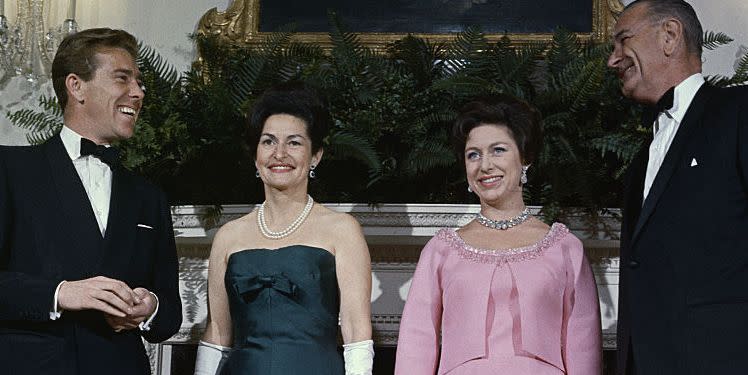
The Crown's season 3, episode 2, dubbed "Margaretology," follows Princess Margaret (Helena Bonham Carter) on her 1965 tour to America.
During the trip, she stops in Washington, D.C. for a monumental visit with President Lyndon B. Johnson.
But how much of their larger-than-life union was accurately depicted? Spoilers ahead.
We're finally introduced to the excellency that is Helena Bonham Carter as Princess Margaret in the aptly-titled second episode of The Crown's season 3, "Margaretology."
It's dedicated to the royal and her husband Lord Snowdon's (Ben Daniels) 1965 American tour, which according to the show, served to mend fences between Britain and the United States. But while we address the success of their visit below, there's another major moment in the show that requires fact-checking: the fast friendship that develops between Princess Margaret and President Lyndon B. Johnson (Clancy Brown) at a formal White House dinner.
Bonham-Carter is magical as an energetic Margaret that's desperate to shine and make her sister—Queen Elizabeth II—proud, but the buddy-buddy relationship between her and the president is a little hard to believe. I mean, did Margaret really finish off with a big smack on the lips after singing show tunes with him? Let's investigate.
Princess Margaret and Lord Snowdon did meet President Lyndon B. Johnson.
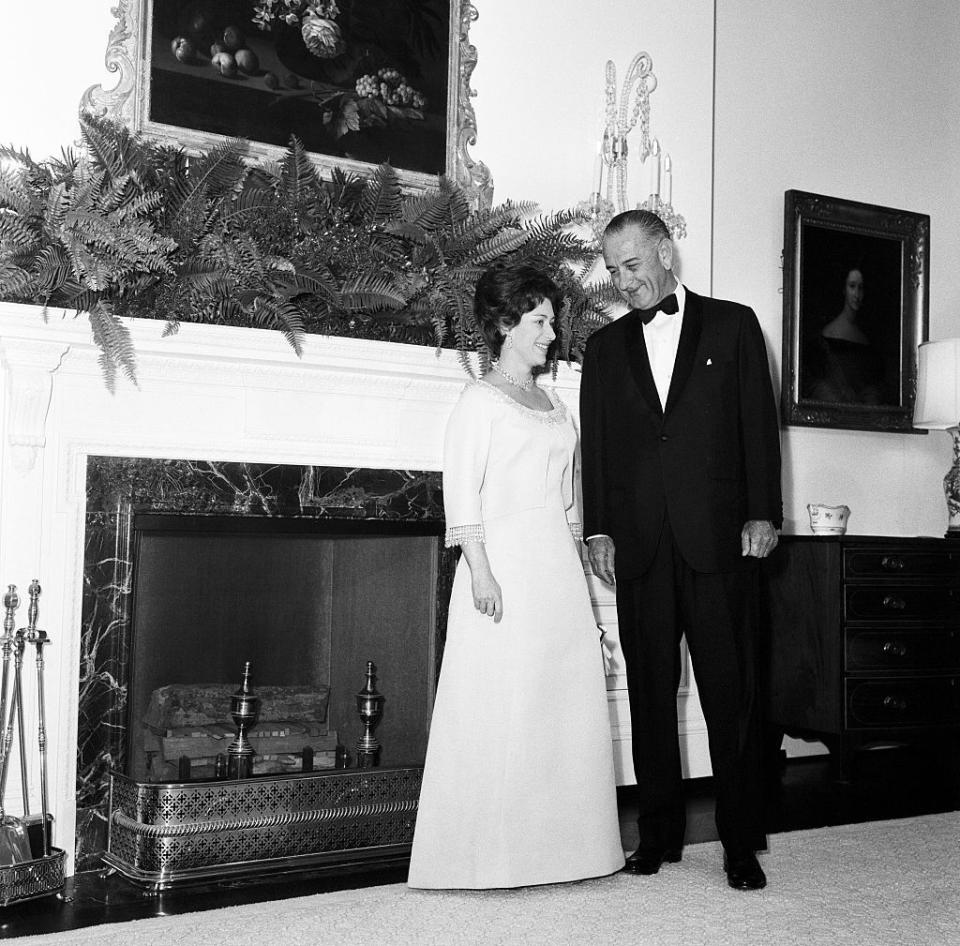
The royal couple first landed in Washington, D.C. on November 15, 1995. According to Town & Country, they spent two days taking in sights like the Lincoln Memorial and Mount Vernon. They even stayed at the British Embassy and were entertained by the attorney general. The official black-tie dinner with President Johnson didn't happen until November 17.
However, in The Crown, Colman's Queen Elizabeth II tells Princess Margaret that the POTUS visit is a do-or-die, high-stakes foreign relations visit, with Britain's financial security all resting on the shoulders of her sister.
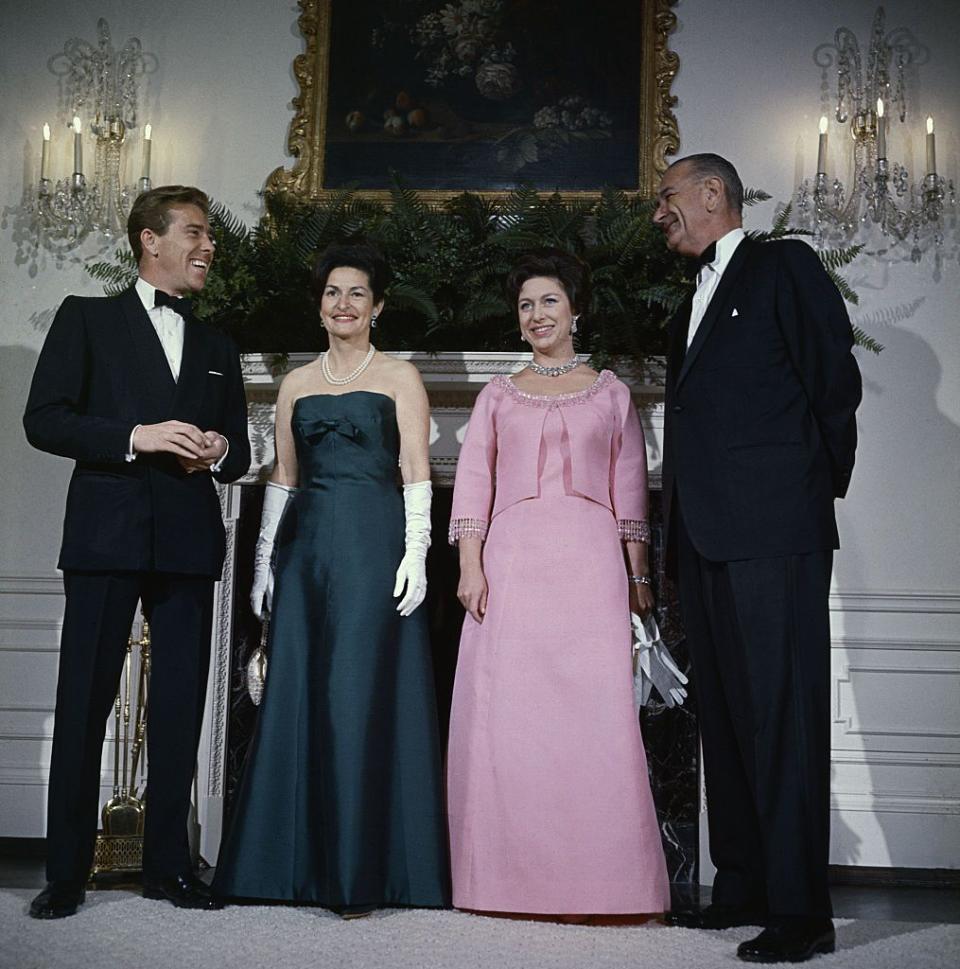
"We must heal the divisions that are emerging between Britain and its American cousins," the fictional queen said. "Britain currently has a deficit of £800 million. What we need is a bailout of at least £1,000. Only the Americans can give it to us."
It's tough to confirm wether Margaret was truly responsibly for Britain's economic future, but we do know that the lead-up to her actual trip wasn't quite as dire considering her D.C. visit was part of her previously-scheduled three-week U.S. tour. In fact, the trip itself was initially personal, and Margaret had been invited to America by a former British U.S. ambassador. But when the palace and government found out about it, it snowballed.
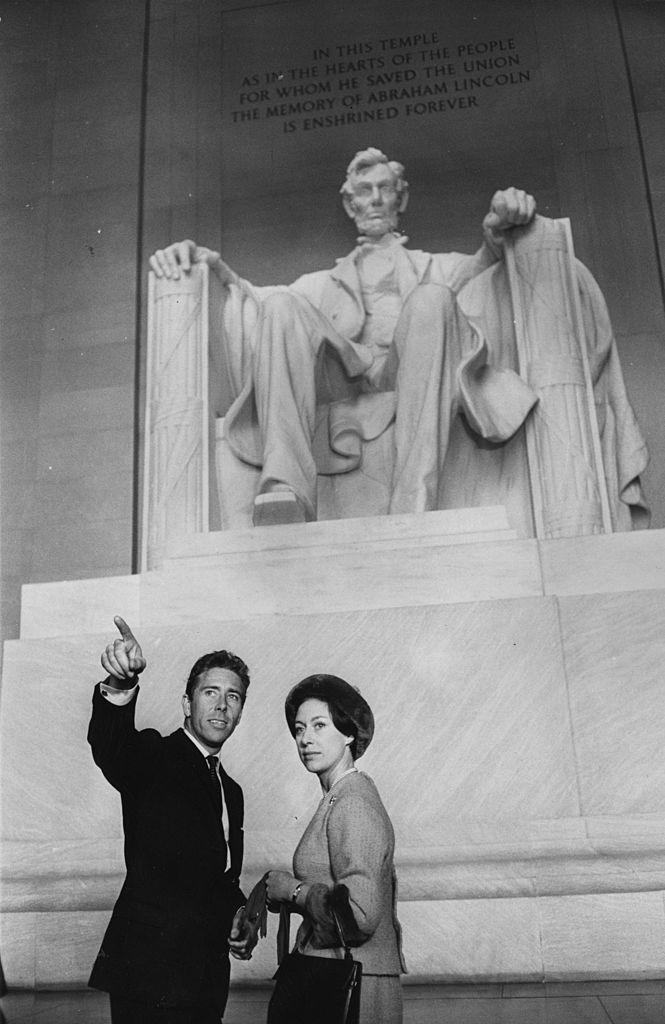
In 1966, Foreign Affairs Minister Walter Padley said: "Then it developed—and I emphasize this—as the result of Government and official interest, into a visit which consisted mainly of official and public engagements undertaken at the specific request of Her Majesty's Government."
Did Johnson and Princess Margaret actually get along as well as they did in The Crown?
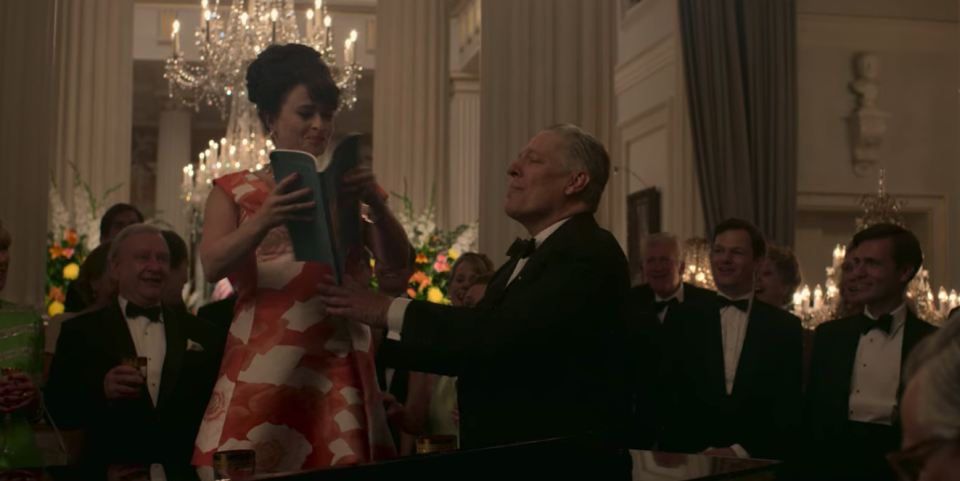
In episode 2 we see that the royal and the president develop a near-instant connection, drinking and cracking jokes as they trade limericks, and as Margaret subtly pokes fun at President John F. Kennedy. (Johnson was Kennedy's vice president until the former's assassination in 1963).
"I do know these days one's not allowed to think anything other than what a great statesman Kennedy was," she said. "[Lyndon] was his loyal deputy. Which I think I can understand better than most. The frustrations and the resentments that can build up from a life as a number two. The support act. Even for someone you adore. You've spent three years as vice president. I spent my whole life as vice queen."
While it's unknown whether the stab at Kennedy did happen, The Crown incorrectly cites this event as Margaret and Johnson's first-ever meeting. The first was at a Jamaican Independence party in 1962. But according to the president's official diary from the 1965 White House visit, he "danced quite a bit that evening, and was not sitting in his chair very much." He and Margaret shared a dance and POTUS "retired" at 2:30 a.m. the next morning.
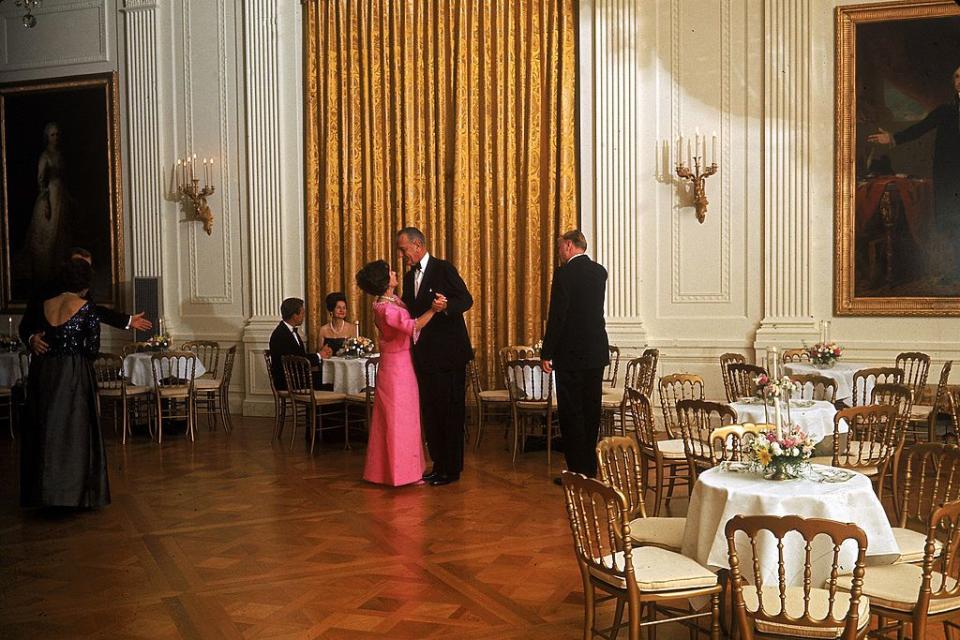
Before he took his rest in the wee hours of the night, the president offered an endearing speech for his regal guest, according to Vanity Fair: “You have claimed our heart, and we are very proud to give it to you. But you have done more. Lord Nelson once said, ‘England expects every man to do his duty.’ And I say tonight, every woman, too. And you have done your duty while in America. You have represented well the people that you serve with dignity and grace and spirit and joy.”
Margaret gave a brief toast, offering a nod to the president and Lady Bird Johnson's 31st wedding anniversary that day. "We are having the most wonderful time in the United States," she said, according to Biography.com. "The hospitality and kindness we have received everywhere has touched us greatly, and it will make us take home superlatively happy memories of all we have done and seen.” Margaret's lady-in-waiting, Elizabeth Cavendish, said that the princess and her husband Lord Snowdon had a "wildly" enjoyable time, according to a 1965 issue of the Winona Daily News.
There were 15o guests in attendance including Kirk Douglas and then-New York Governor Nelson Rockefeller.
Was Margaret's trip to America as successful as it seemed in The Crown?
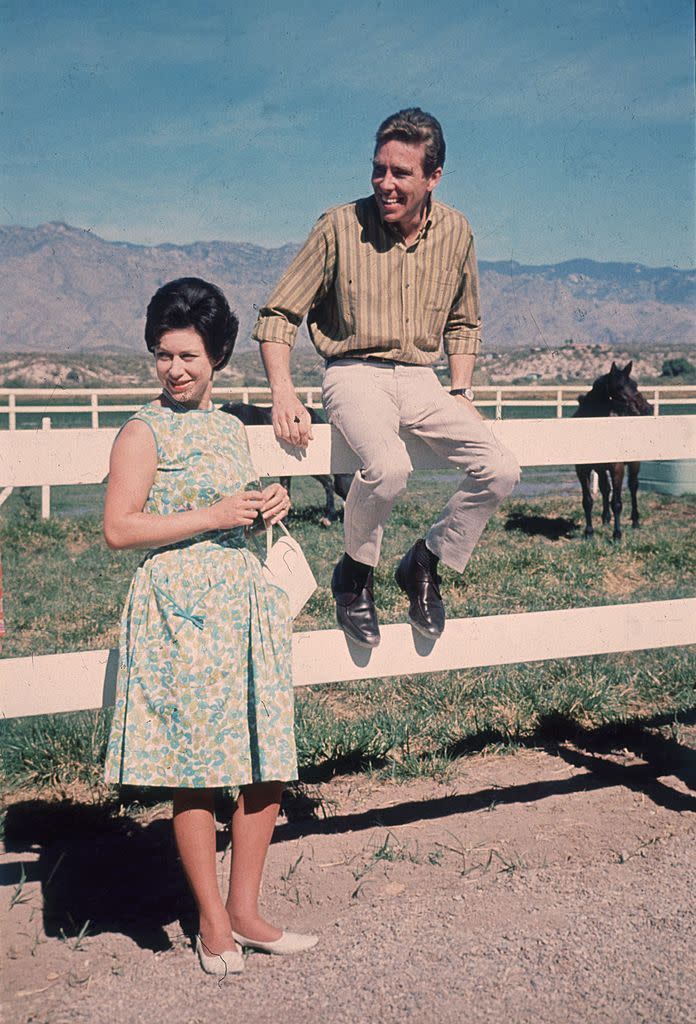
D.C. took up just four days of Princess Margaret and Lord Snowdon's three-week trip to America. They also visited San Francisco, L.A., Arizona, and New York. The Crown labeled the trip a success, and while the American media seemed to agree, those back in the U.K. were not impressed at all with the princess's trip.
It was later revealed by The Telegraph that British diplomats "barred" Margaret from ever visiting the U.S. again—particularly when the idea was revisited in the '70s. Apart from the U.K. government and press criticizing the £30,000 cost of the 1965 trip (the equivalent of £350,000 in 2003, according to The Telegraph), British ambassador to America, Lord Cromer, did not appreciate the behavior of the royal entourage.
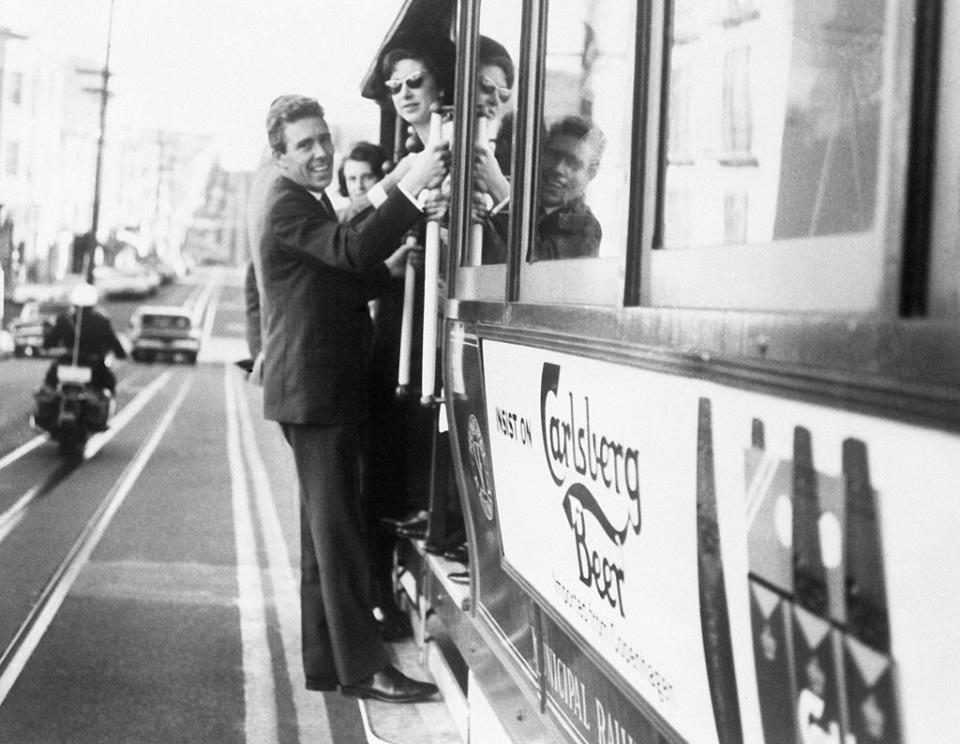
"You will remember that Lord Cromer is not at all keen on having the Princess in the United States, possibly for some time to come. This is mainly due to the behavior of some of HRH's friends, who tend to take such visits very lightly," Lees Mayall, the Vice-Marshal of the Diplomatic Service, wrote in a memo.
The princess and Lord Snowdon were also known to enjoy frequent parties and nights out, and they took that same fun-loving attitude overseas. They were critiqued by officials because "they worked and played hard." Margaret was also said to have had verbal spars with Elizabeth Taylor, Grace Kelly, and Judy Garland. Apparently, the royal requested that Garland sing for her, prompting Garland to call Margaret a "nasty, rude little princess" and to "tell her I'll sing if she christens a ship first."
And to summarize it all? During a February 1966 Parliament House meeting, politician William Hamilton said:
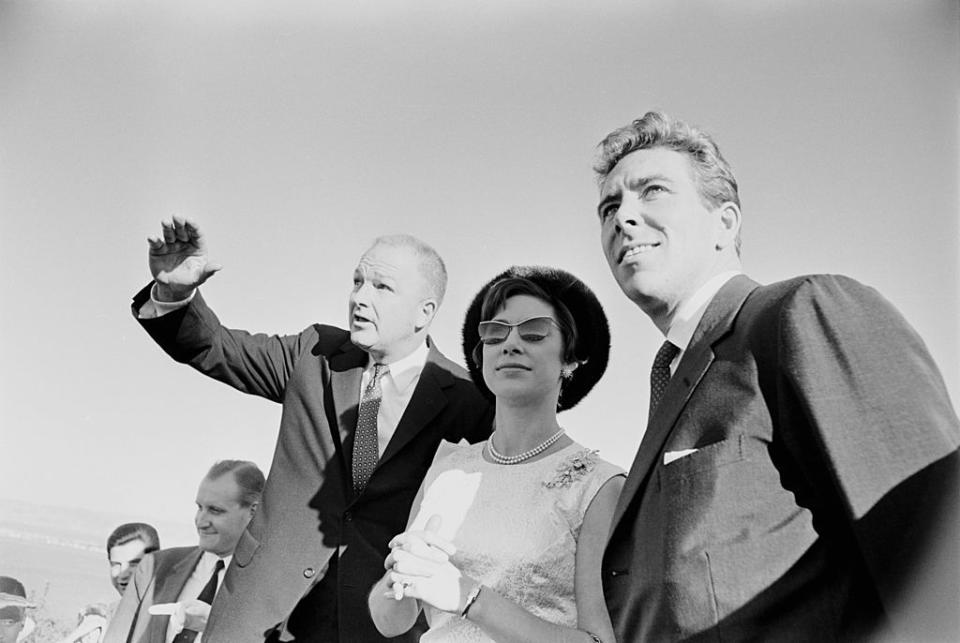
Never in modern history has a Royal visit overseas evoked so much public and private criticism from all shades of opinion and from all parts of the Commonwealth as did the recent trip of Princess Margaret to the United States of America. Time does not permit me to quote them all. Adverse Press comment ranged from the far right of the Sunday Telegraph and the Sunday Express to the Observer, the Sun, the Sunday Citizen, the New Statesman and the Journalist, to mention just a few.
The visit was variously described, to quote the Sunday Citizen, as a whirl of high society dinners and receptions. The Sunday Express described it as a holiday frolic among the tinsel princes and princesses of Hollywood. The Sun talked of the insensitive vulgarity of conspicuous expenditure and the New Statesman described it as a private rubber-necking trip to the American fun centres. These are not my words. They are the words of the press over the entire political spectrum."
Yikes.
For more ways to live your best life plus all things Oprah, sign up for our newsletter!

